READY TO GET STARTED?
REQUEST A FREE ESTIMATE
Fill out the form below or call (888) 466-7849 for a free, no-obligation estimate.
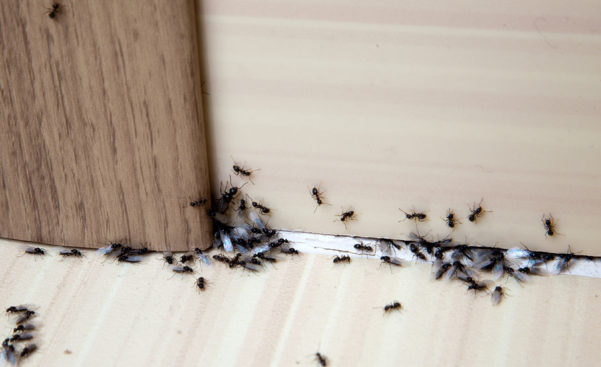
Ants have been named the #1 nuisance pest in the United States. Ants are social insects that live in colonies. They enter our homes looking for food and shelter. Ants primarily look for foods that are sugary and sweet or greasy and protein-based. Once they find food, they leave a pheromone trail behind that other ants will follow.
There are over 700 species of ants in the United States. At least 20 of these species are known to infect homes and other structures. There are several species of ants that are common to our area. The 5 most common are:
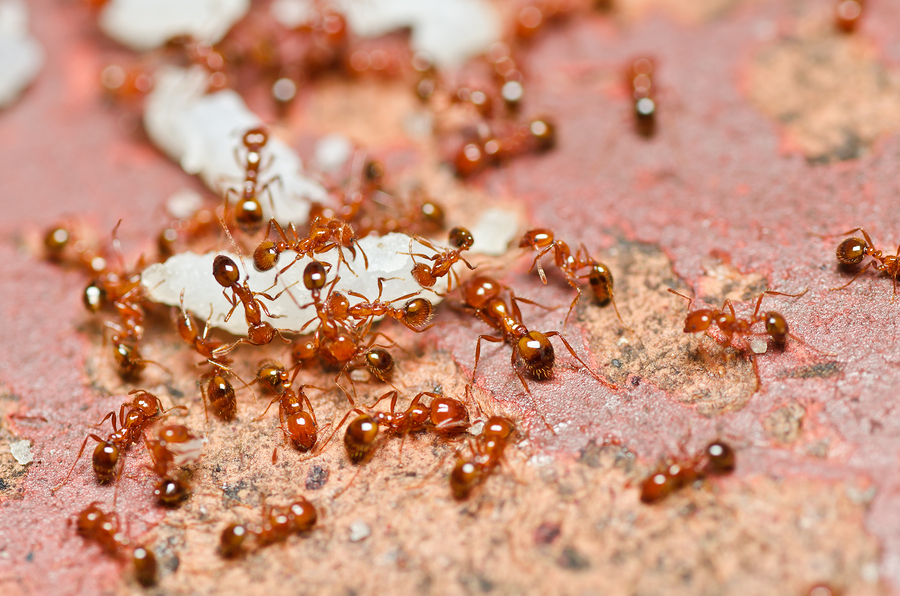
Fire ants build large, raised mounds. They prefer to nest in open, disturbed areas. They commonly nest in yards, fields, and roadsides. Fire ants are known to devastate local insect populations and small wildlife. They are also known to eliminate ground nesting bird species because they attack their newly hatched nestlings. Fire ants cause painful stings when they bite and will bite humans when threatened.
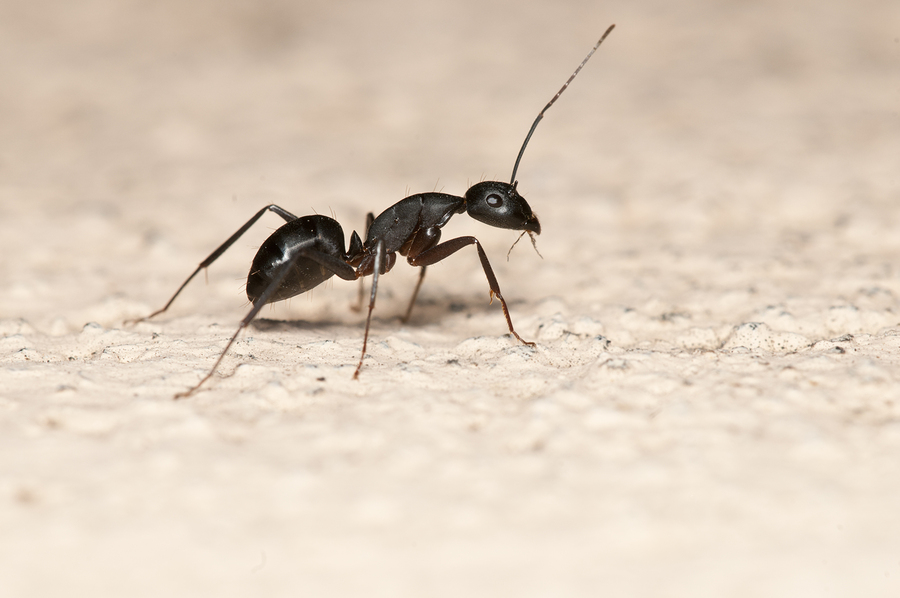
Carpenter ants are black in color. They are nocturnal and will exit their nests about 15 minutes after sunset in large numbers. Carpenter ants will invade kitchens in the summer months in search of food and water. They will invade structures if moisture is present. Carpenter ants can be very destructive to homes.
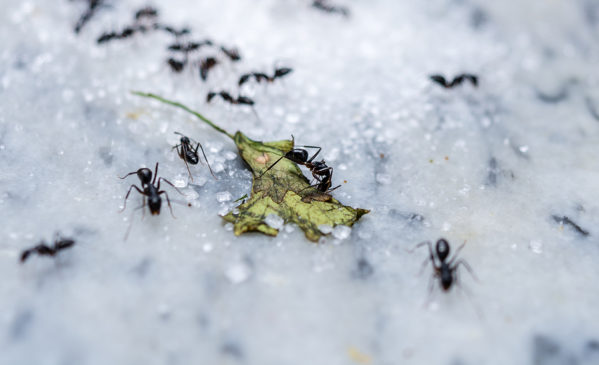
Argentine ants are light brown in color. They can easily squeeze through small cracks and holes. Argentine ants are known to set up colonies in the ground, in concrete walls, between boards and timbers, and among the belongings in your home. These ants are commonly seen in homes and will enter them in search of food and water. They are especially common during dry or hot weather or after a heavy rainfall. Argentine ants exhibit strong trailing behavior and can exist in high numbers. They move very quickly and are named among the world’s 100 worst animal invaders.
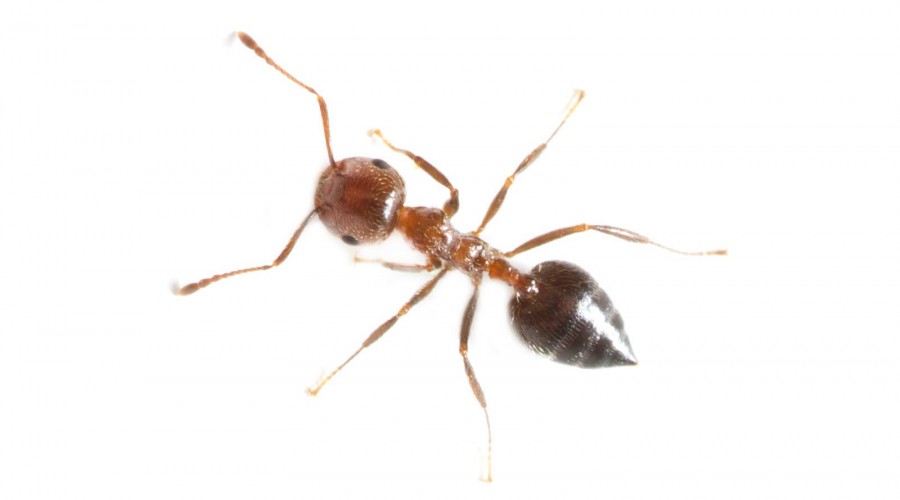
Acrobat ants are dark colored with a heart shaped abdomen that they will hold up in the air like a flag when disturbed. They will nest inside decaying wood. Acrobat ants form single file trails and leave behind small sawdust piles that are similar to those of carpenter ants. These ants produce a mild sting when they bite. Acrobat ants may move into your attic to incubate their eggs and will tunnel into water damaged wood.
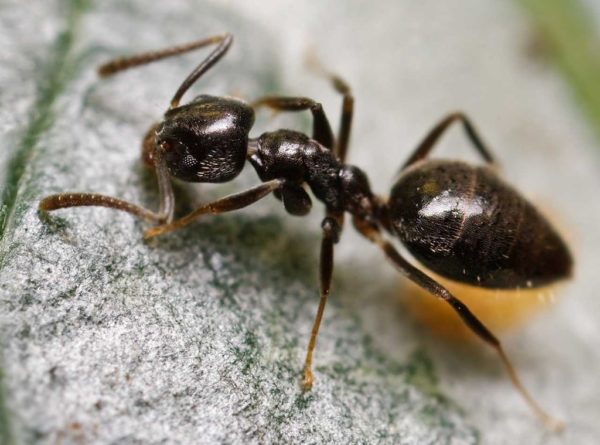
Odorous house ants are dark colored and give off a strong rotten coconut smell when they are crushed. They exist in large numbers where there is plenty of moisture. They form trails similar to Argentine ants. Odorous house ants are one of the most difficult pests to get rid of from structures. They will often establish their colonies in earth filled porches and block walls.
Since ants are one of the most difficult pests to get rid of, what can you do to keep them from invading your home in the first place? Check out these tips for keeping the ants out of your personal space.
Eliminating ants can be an uphill battle. If they aren’t properly treated, the infestation can continue to grow despite your best efforts. Some ants like carpenter ants can cause serious property damage. Other ants like fire ants can pose a serious health threat to your family. Other species, while not necessarily a threat to your family, can still contaminate your food. If you suspect you have an ant problem call a professional pest control company. A professional can identify what species of ant you have which is the first step in eliminating these nuisance pests. They can also find the entry points and provide you with a thorough and comprehensive treatment plan.
Brief description:
Fire ants get their name through their ability to inflict painful bites and stings. They vary considerably in size and build large raised mounds in lawn areas. One interesting fact about fire ants is they have been known to infest electrical boxes en masses, causing the equipment to malfunction.
Habits:
Different species:
Threats:
Prevention:
Other pests to look out for:
 Builders in Georgia, Tennessee, Alabama, and South Carolina can rest assured knowing that they have Northwest Exterminating in their corner during the termite pretreatment phase. Time is money in the new construction business and Northwest’s New Construction Team helps make sure that your projects stay on track. We are dedicated to providing superior services to the builder market.
Builders in Georgia, Tennessee, Alabama, and South Carolina can rest assured knowing that they have Northwest Exterminating in their corner during the termite pretreatment phase. Time is money in the new construction business and Northwest’s New Construction Team helps make sure that your projects stay on track. We are dedicated to providing superior services to the builder market.
Northwest’s New Construction Team is a department that is dedicated specifically to builders and their needs:
A Northwest Exterminating New Construction representative will meet with you and customize a pretreatment plan to meet your needs. We also continue this same great service once the home has been sold. We take care of pest control, termite control, wildlife, commercial, TAP, lawn care, mosquito, fire ant, and bed bug solutions for homes and businesses. Builders and homeowners alike can Trust the Mouse.
 There is a good chance that you live in some sort of community that is represented or managed by a community management company or a homeowners association. Apartments, condos, townhomes, and many neighborhoods have a company or association in place that helps maintain the safety, upkeep, and the general property value of a community intact. For these companies and associations, their needs are different than an individual homeowner that is looking for pest or termite control.
There is a good chance that you live in some sort of community that is represented or managed by a community management company or a homeowners association. Apartments, condos, townhomes, and many neighborhoods have a company or association in place that helps maintain the safety, upkeep, and the general property value of a community intact. For these companies and associations, their needs are different than an individual homeowner that is looking for pest or termite control.
The needs of community management companies and HOA’s are different than the individual homeowner. That is why we have a team that specializes in meeting their unique needs. Our Community Management Services team specializes in termite and pest control needs for community/property managers, homeowners associations, and property owners associations. We provide services for single-family detached homes, multi-unit homes, clubhouses, amenity buildings, and condominiums.
Northwest Exterminating is the right choice for community managers when it comes to termite, pest, mosquito, wildlife, fire ant, and carpenter bee control. Not only do we have an experienced team in place for community managers, we have a board-certified entomologist on staff, convenient billing, repair warranties, and multiple locations throughout Georgia and Tennessee.
Ask your HOA or community management company if they use Northwest Exterminating. The healthier your community is, the healthier your home is. If you need to contact someone in our Community Management Services team click HERE.
Do you have an HOA or CMA company?
 There is a good chance that you live in some sort of community that is represented or managed by a community management company or a homeowners association. Apartments, condos, townhomes, and many neighborhoods have a company or association in place that helps maintain the safety, upkeep, and the general property value of a community intact. For these companies and associations, their needs are different than an individual homeowner that is looking for pest or termite control.
There is a good chance that you live in some sort of community that is represented or managed by a community management company or a homeowners association. Apartments, condos, townhomes, and many neighborhoods have a company or association in place that helps maintain the safety, upkeep, and the general property value of a community intact. For these companies and associations, their needs are different than an individual homeowner that is looking for pest or termite control.
The needs of community management companies and HOA’s are different than the individual homeowner. That is why we have a team that specializes in meeting their unique needs. Our Community Management Services team specializes in termite and pest control needs for community/property managers, homeowners associations, and property owners associations. We provide services for single-family detached homes, multi-unit homes, clubhouses, amenity buildings, and condominiums.
Northwest Exterminating is the right choice for community managers when it comes to termite, pest, mosquito, wildlife, fire ant, and carpenter bee control. Not only do we have an experienced team in place for community managers, we have a board-certified entomologist on staff, convenient billing, repair warranties, and multiple locations throughout Georgia and Tennessee.
Ask your HOA or community management company if they use Northwest Exterminating. The healthier your community is, the healthier your home is. If you need to contact someone in our Community Management Services team click HERE.
Do you have an HOA or CMA company?